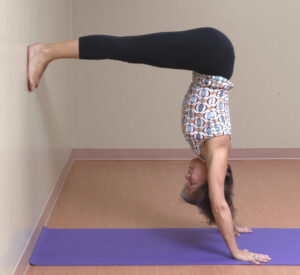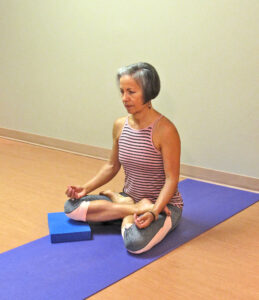The journey of enlightenment is a journey of the mind: from a focus on the body to a focus on spirit, from a limited sense of self to an unlimited sense of Self, from a sense of separateness to a sense of unity with all things, from blame to blessing, and from fear to love.
This journey of my mind and heart – not always easy but always miraculous – changes every aspect of my life. It transforms my nervous system, my energy, and my internal state of being. It leads to changes in my behavior and shifts in how others respond to me. Marianne Williamson
At first reading, Marianne’s description of enlightenment appears to be a heady one, possibly something that very few of us will ever experience. Fortunately, this is not the case. Each of us is bridging the change gap between endings and new beginnings on an ongoing basis. As we become more aware of what is involved in this process (see the visual below), we eventually discover that every evening our physical body encounters this simple cycle — go to bed, sleep and awaken. And every day, our awakening brings forth a new beginning from which we can emerge different from what we previously were.
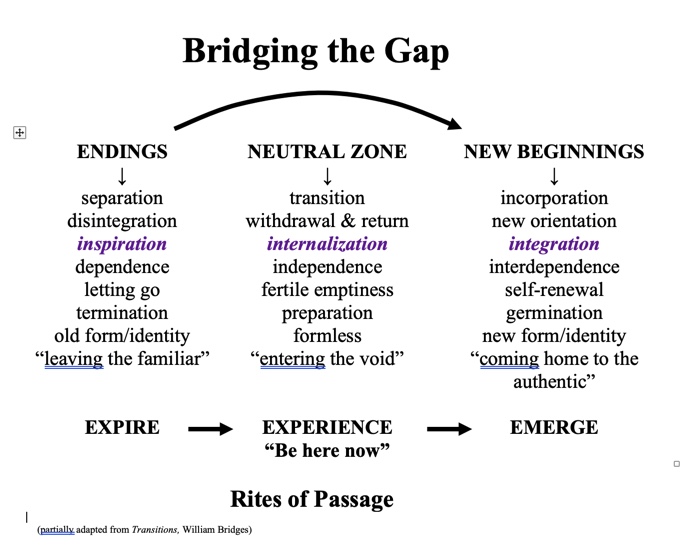
The same bridging process holds true each time we practice yoga. During each practice, the yoga actions and asanas reveal to us what we need to let go of. If we are willing to surrender our old holding patterns and step into the “void of uncertainty”, we are always rewarded with the new knowledge necessary to move us along our path of renewal and integration. Thus, every time you practice yoga you are experiencing enlightenment.
As Marianne indicated, this path of enlightenment includes mind, body and spirit. We do not change one without changing all three. This wholistic integration requires our full awareness, which is why restorative practices are so beneficial for everyone. In each restorative pose, we stay in the shape for three to five minutes primarily to give the body an opportunity to first relax and then to open. It takes our tissue, musculature, joints, skin and organs at least three minutes before we feel the sensations of released tension and tightness. It is important to remember, that none of the awakening sensations should be painful. Pain is a signal of potential injury whereas discomfort is a signal that tension needs to be released. Therefore, allow your depth in the pose to take you to your edge of discomfort and watch for what happens. As our mind pays attention to our body’s experience, this single-minded concentration allows our intuition and joy to rise to the surface of our awareness and communicate understanding and a new sense of self.
Use the yoga actions and sequence below to experience your own piece of enlightenment.
YOGA ACTIONS:
1. As you settle into each pose, notice your inner sensations. Can you ease any tension or tightness by bringing the breath into that location?
2. As your body fully settles into the pose, ask yourself this question — “What don’t I know?”
Confusion is often the emotional reaction felt when we don’t know why something is occurring. Physical sensations are also a signal of ‘not knowing’ why our body is reacting the way it is. Allow yourself time in each pose for an answer(s) to emerge in your awareness.
BHISHMASANA (Bed of Nails Pose) 2 minutes each arm variation
-rolled blanket under the mid to upper thoracic
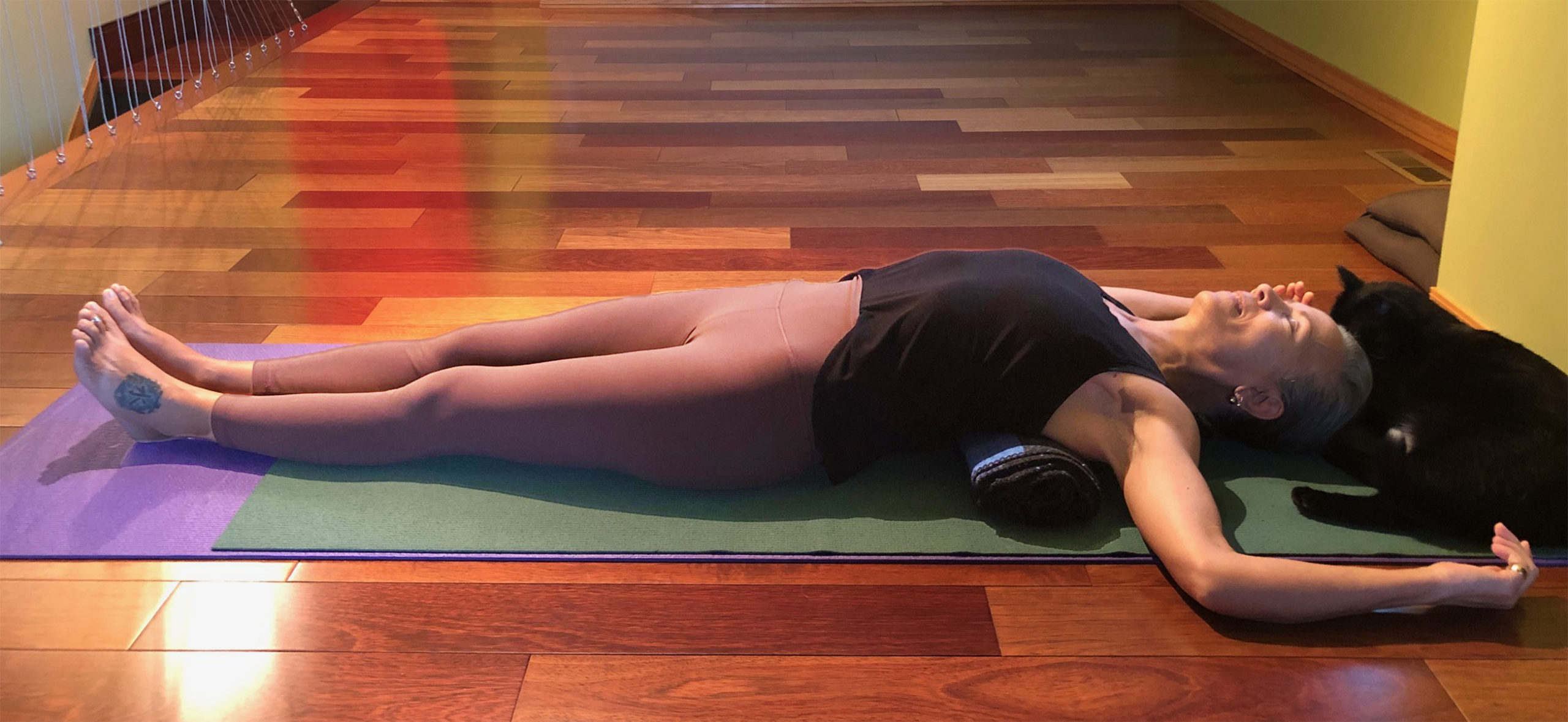
1) cactus arms
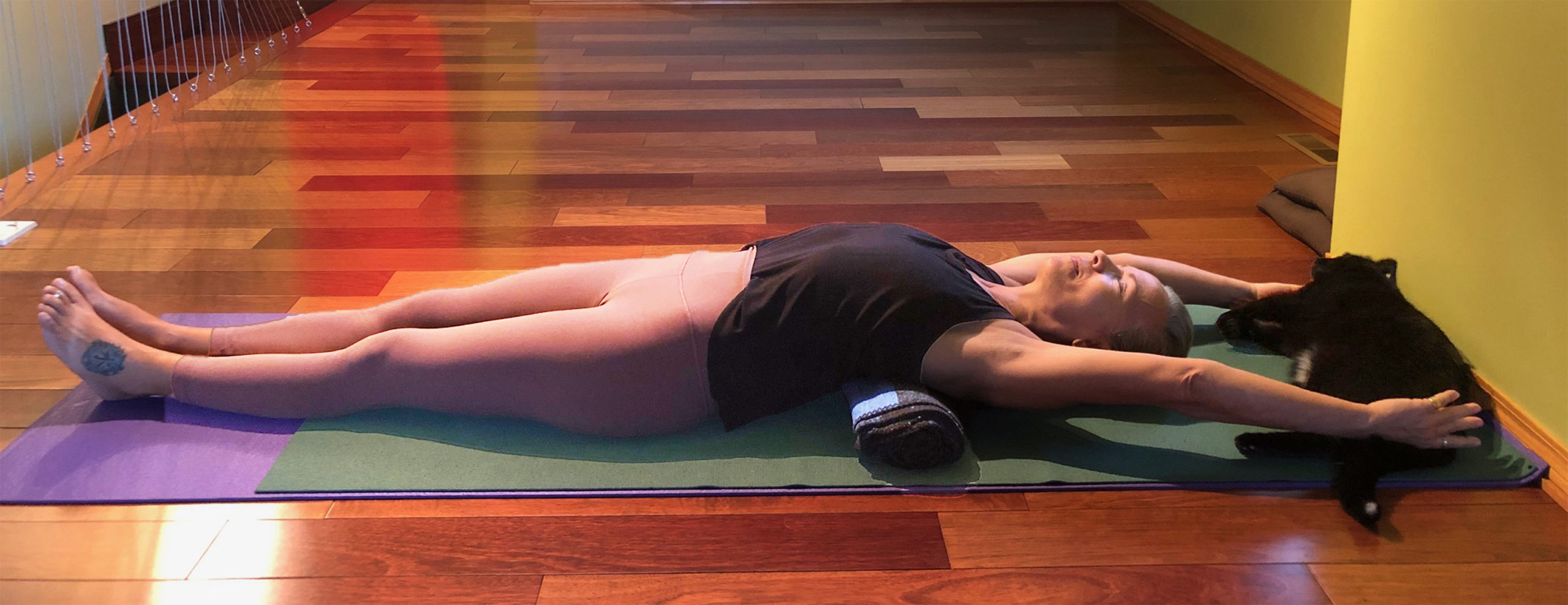
2) Hasta arms
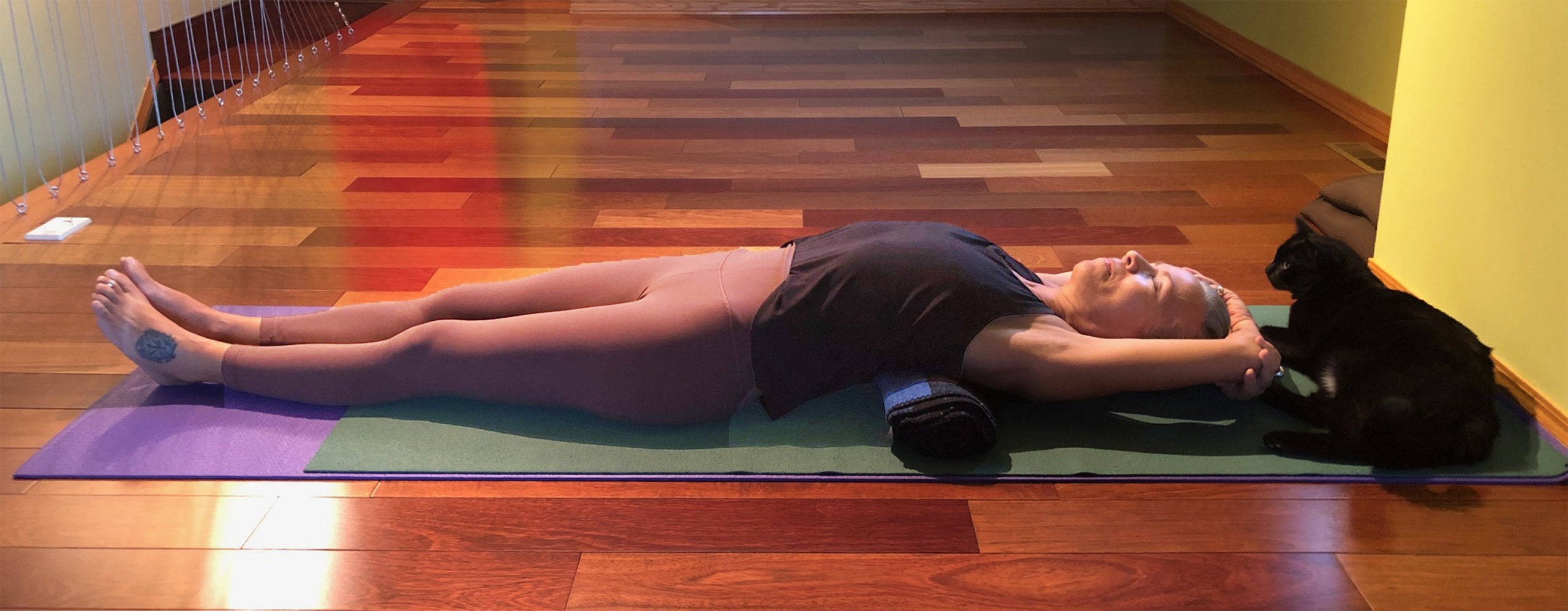
3) Clasp elbows
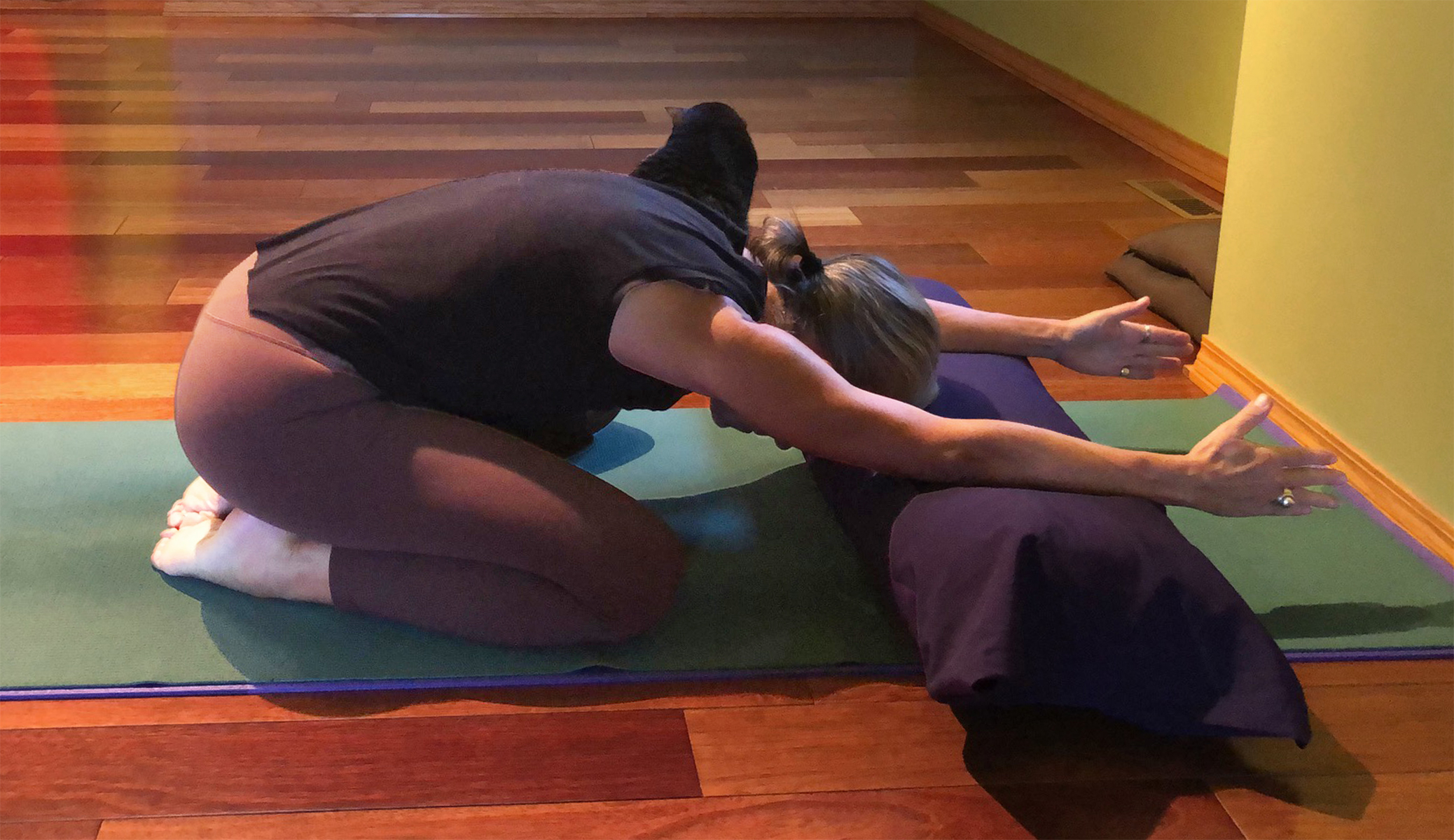
SALAMBA BALASANA (Supported Child Pose) 3 m
-bolster under elbow joints of Hasta arms
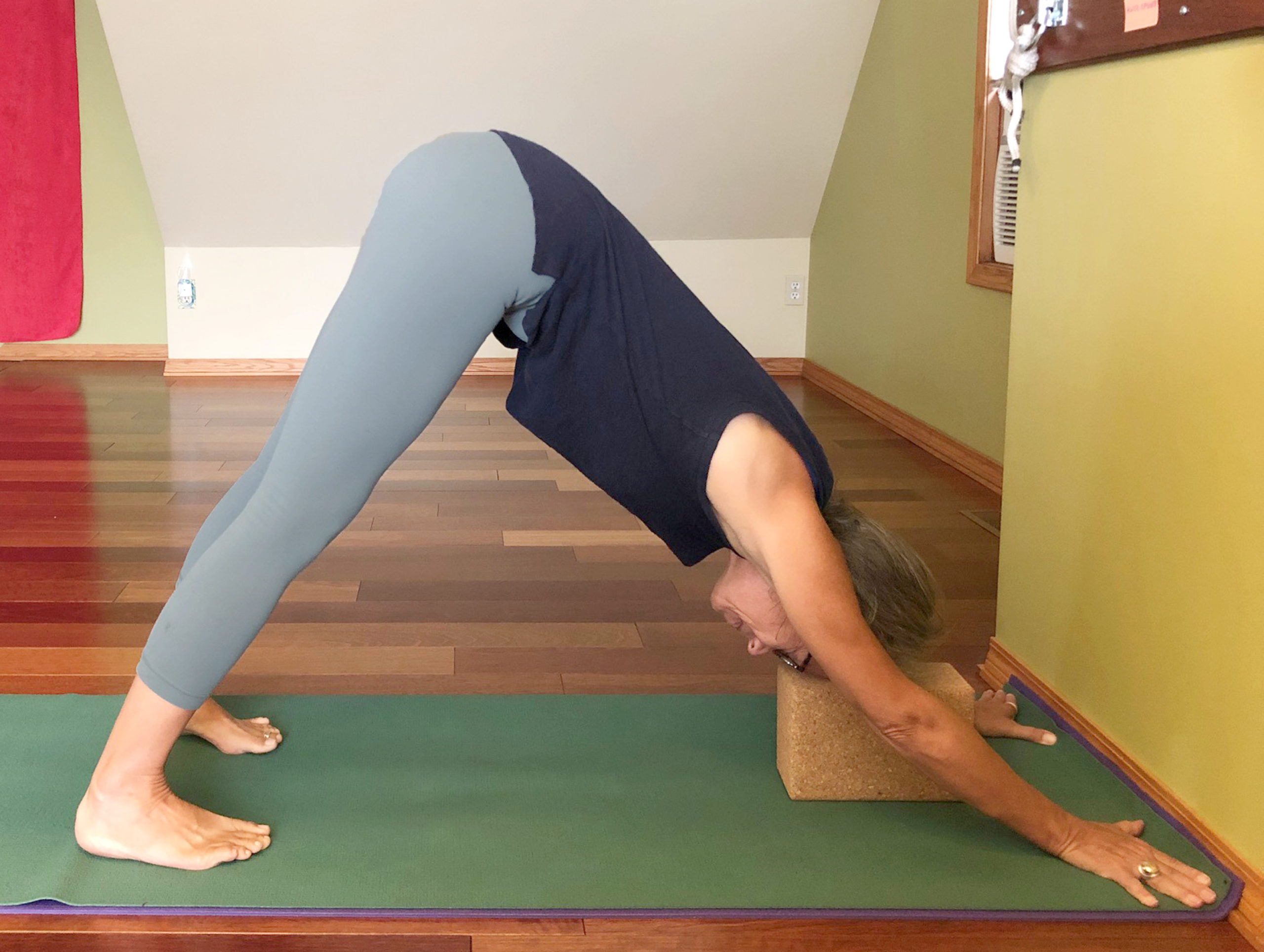
SALAMBA ADHO MUKHA SVANASANA (Supported Down Dog) 2 m
-head on block OR bolster
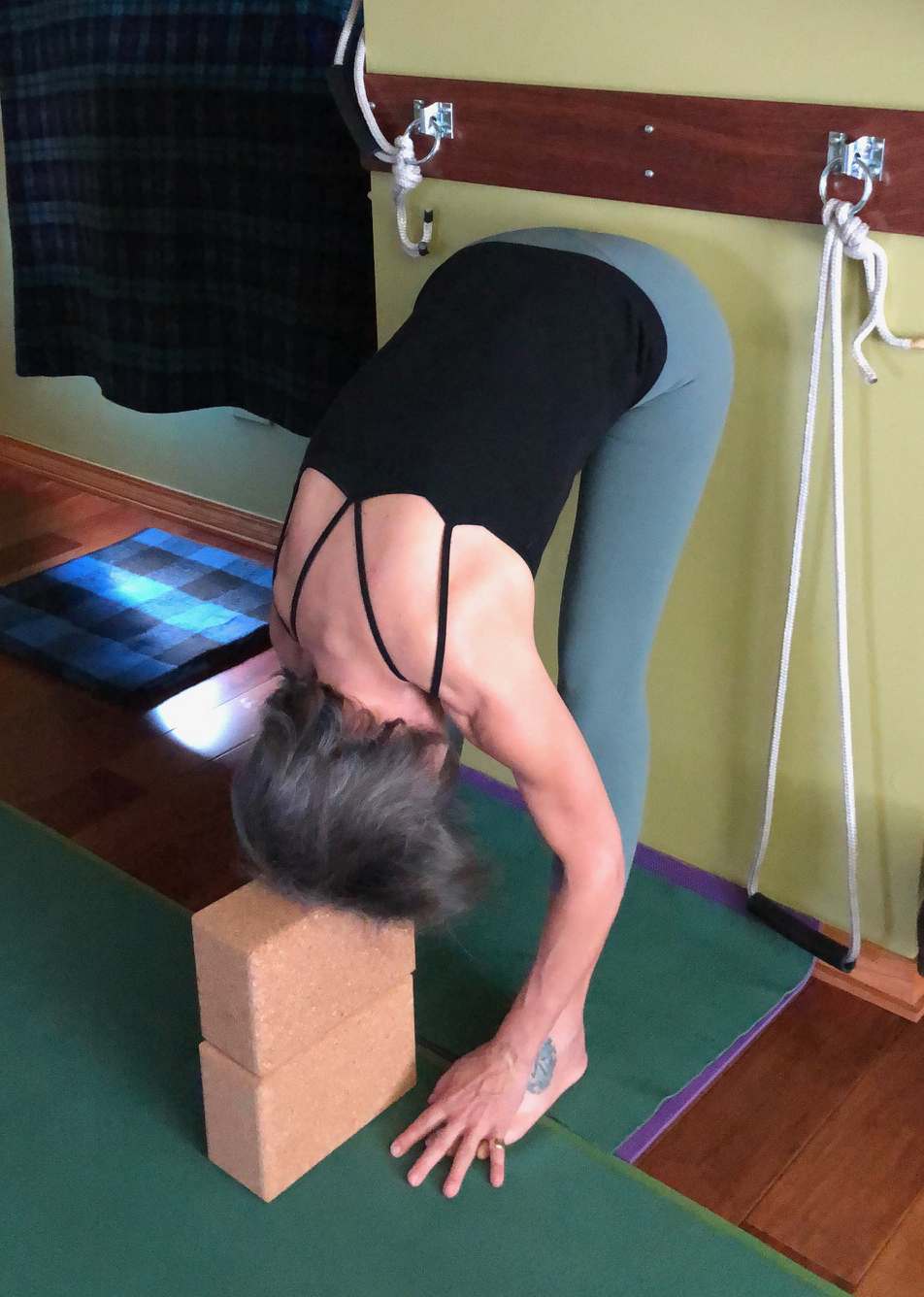
SALAMBA UTTANASANA (Supported Forward Fold) 3 m
-sit bones into wall; crown on block(s)
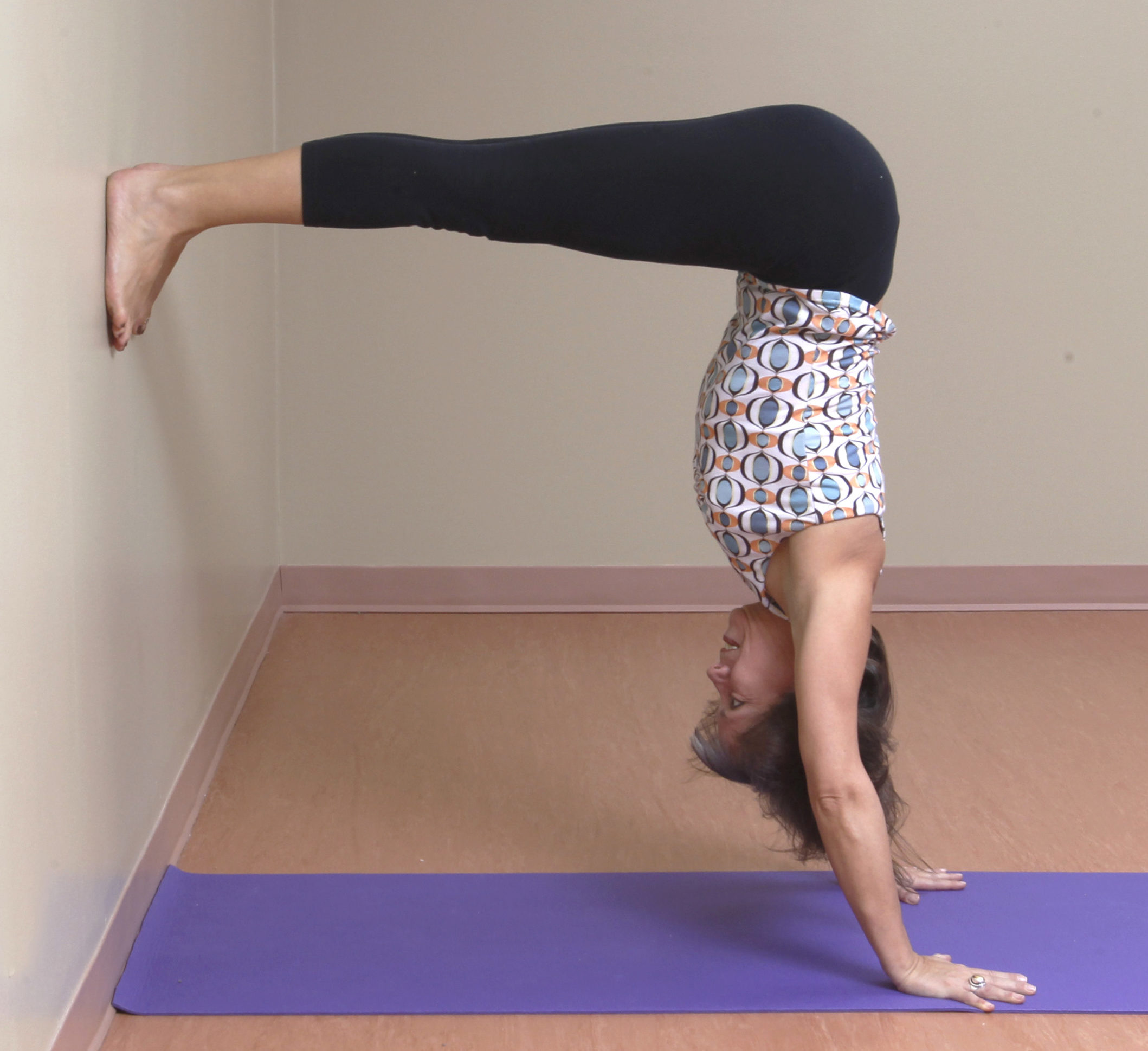
ARDHA ADHO MUKHA VRKSASANA (Right-angle Handstand) 2 REPS @ 5 – 10 Bs
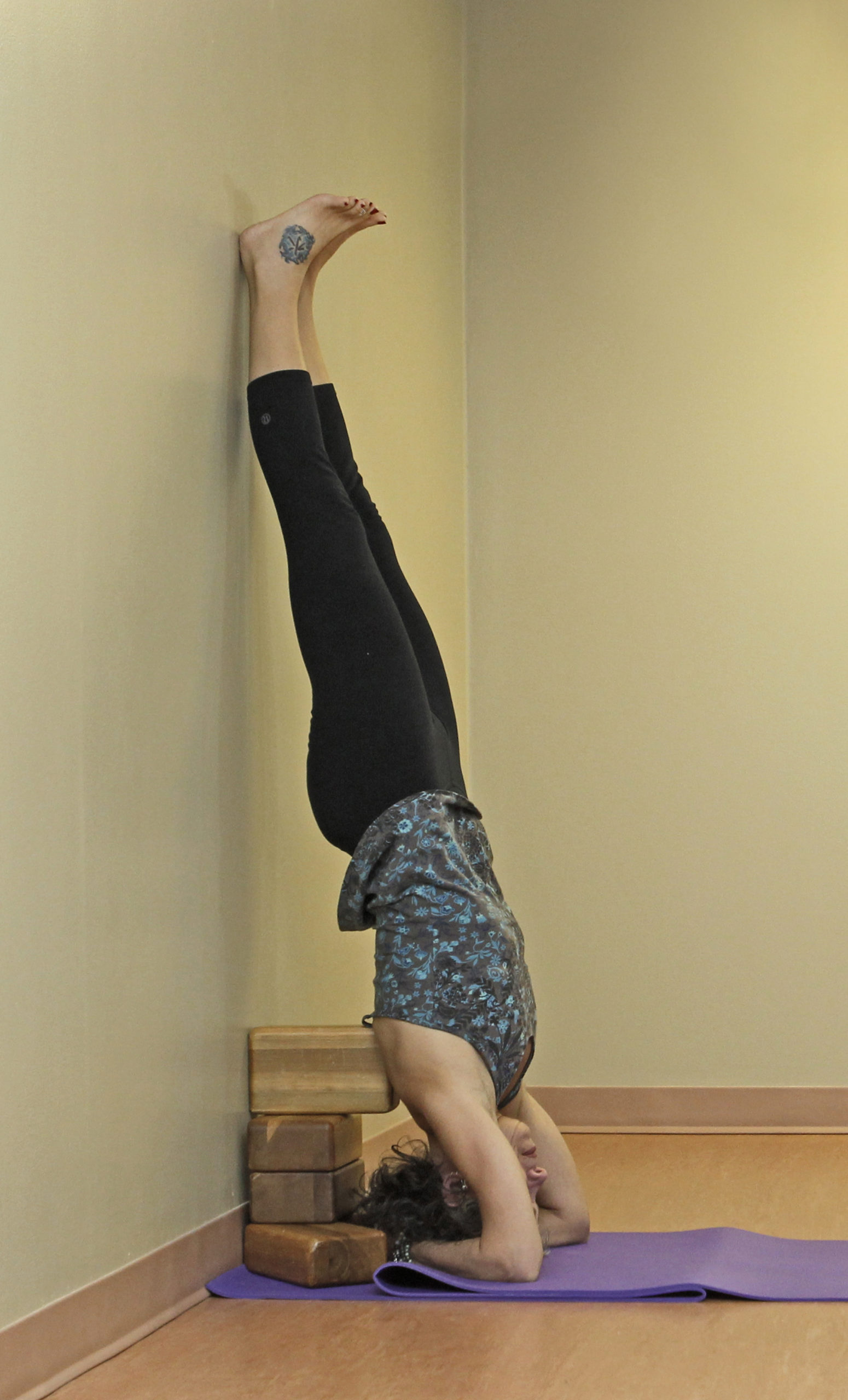
SALAMBA SIRSASANA (Supported Headstand) 2 – 3 m
-5 blocks into wall to support thoracic spine
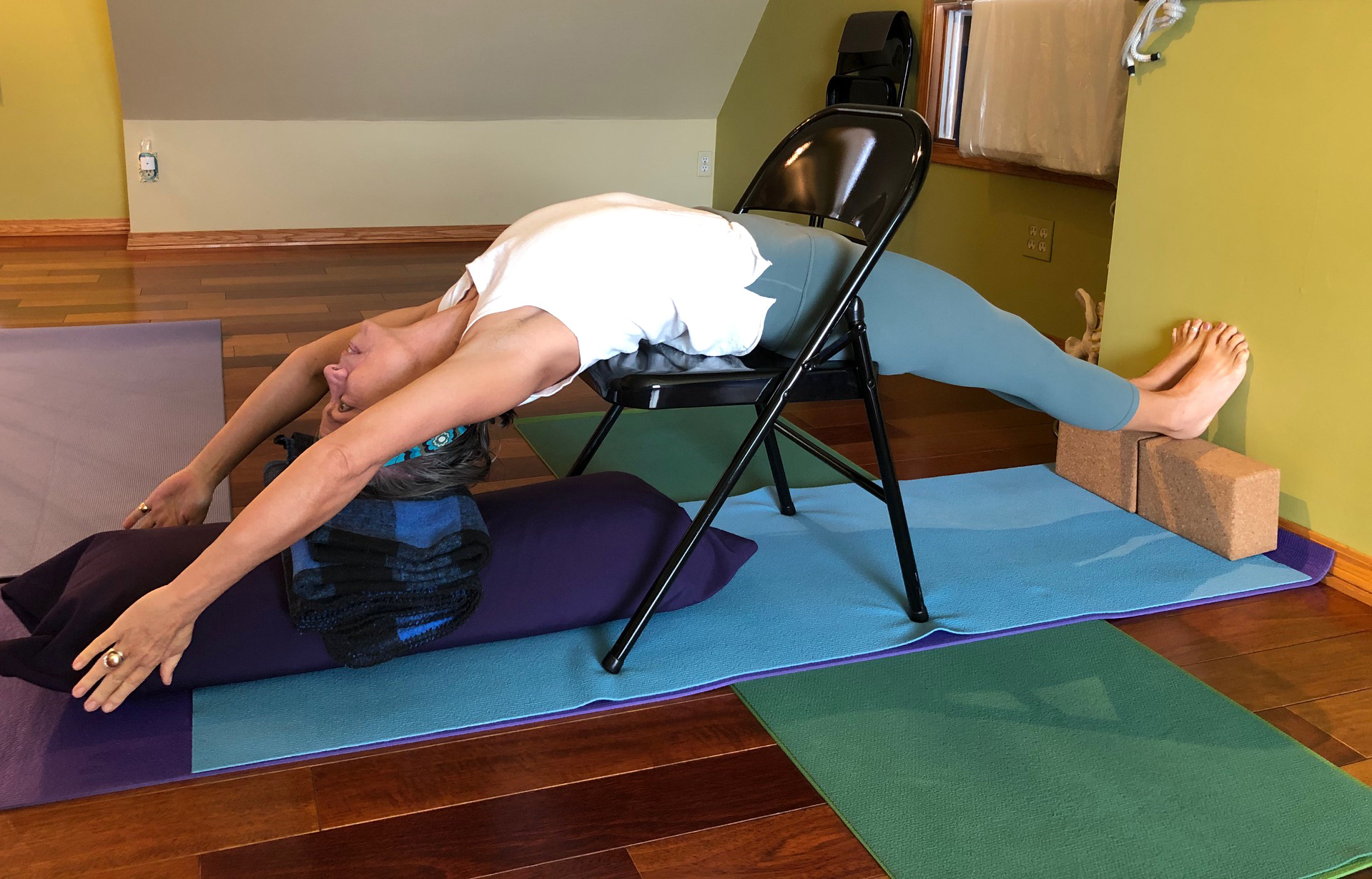
SALAMBA URDHVA DHANURASANA (Supported Backbend) 3 – 5 m
-heels on blocks; head supported
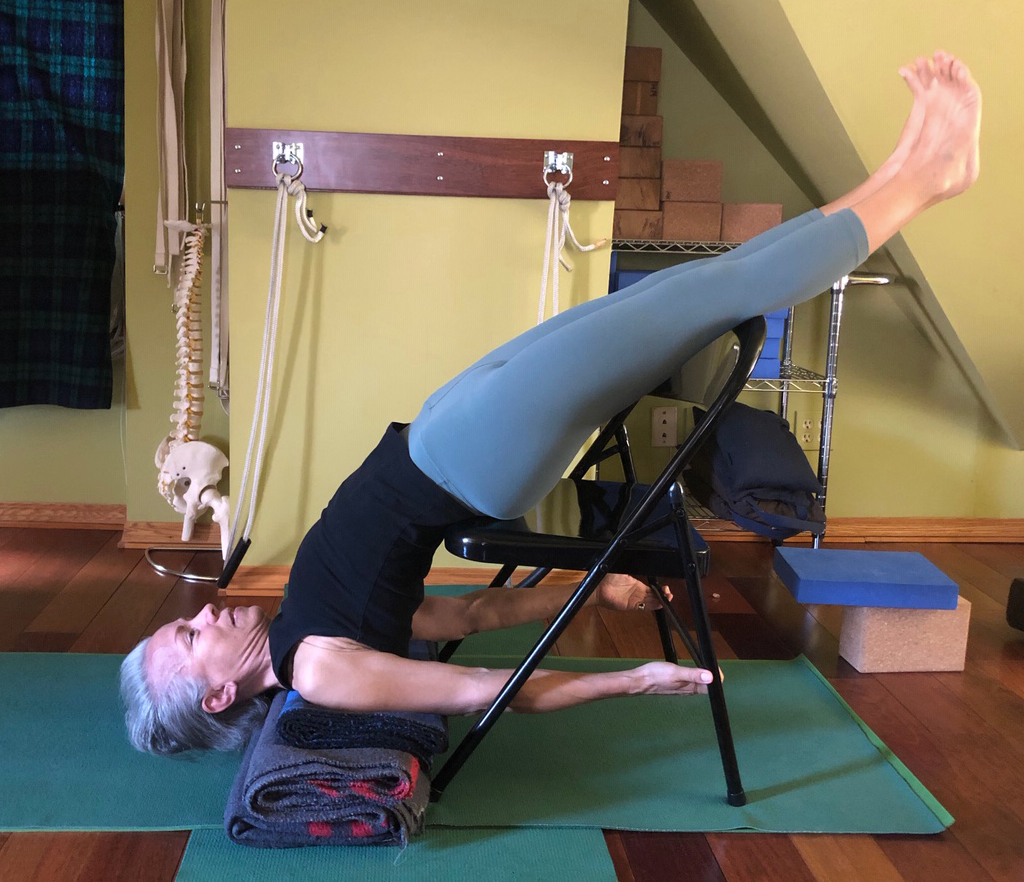
SALAMBA SARVANGASANA (Supported Shoulderstand) 3 – 5 m
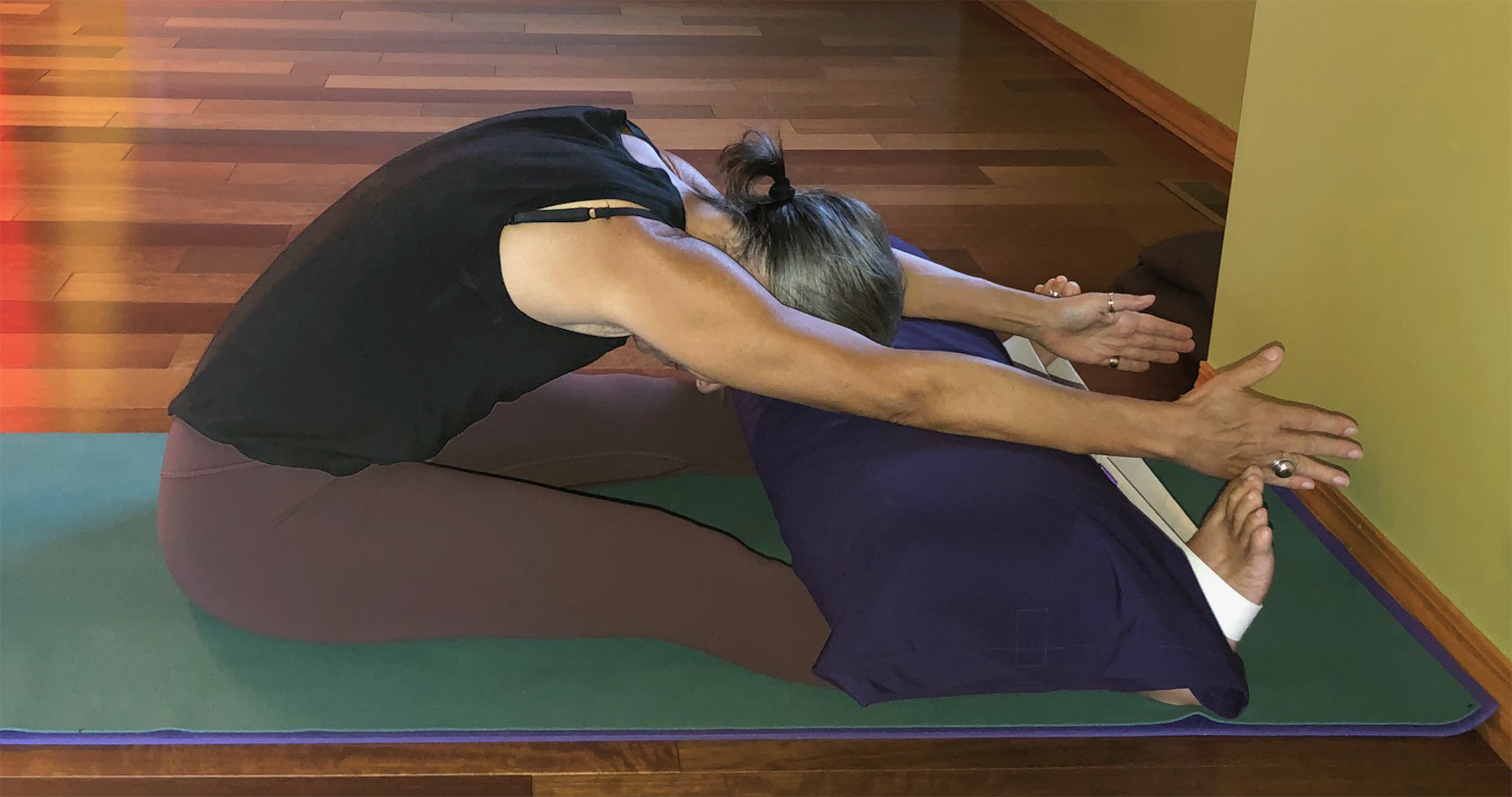
SALAMBA UPAVISTHA KONASANA (Supported Wide-leg Forward Fold) 3 m
-belt around both toe mounds; feet mat width apart (short end of mat)
– bolster across front of ankles; rest forehead
– Hasta arms (bolster under elbow joints)
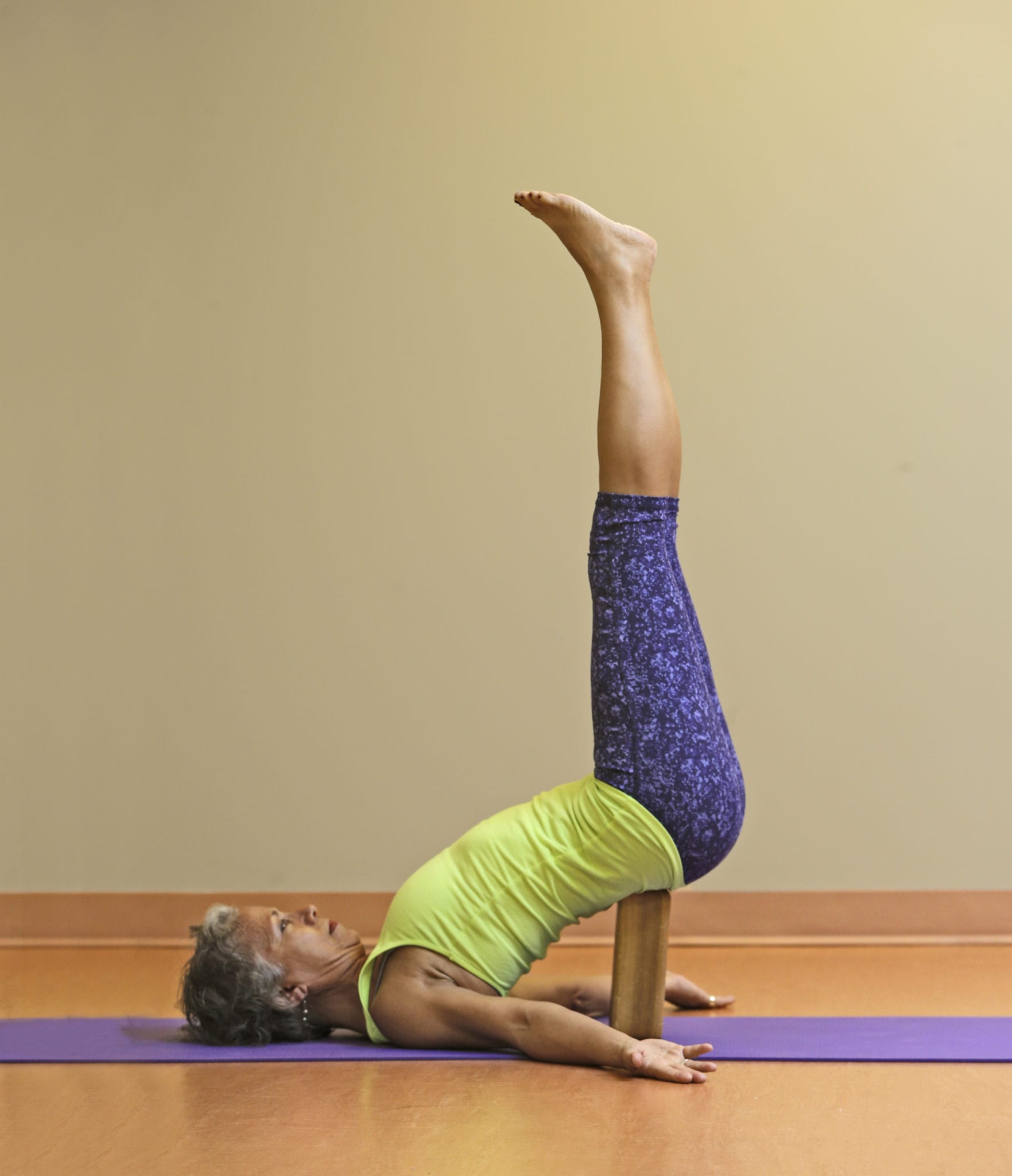
SALAMBA VIPARITA KARANI (Supported Inverted Actions Pose) 2 m
-block under pelvis; legs raised
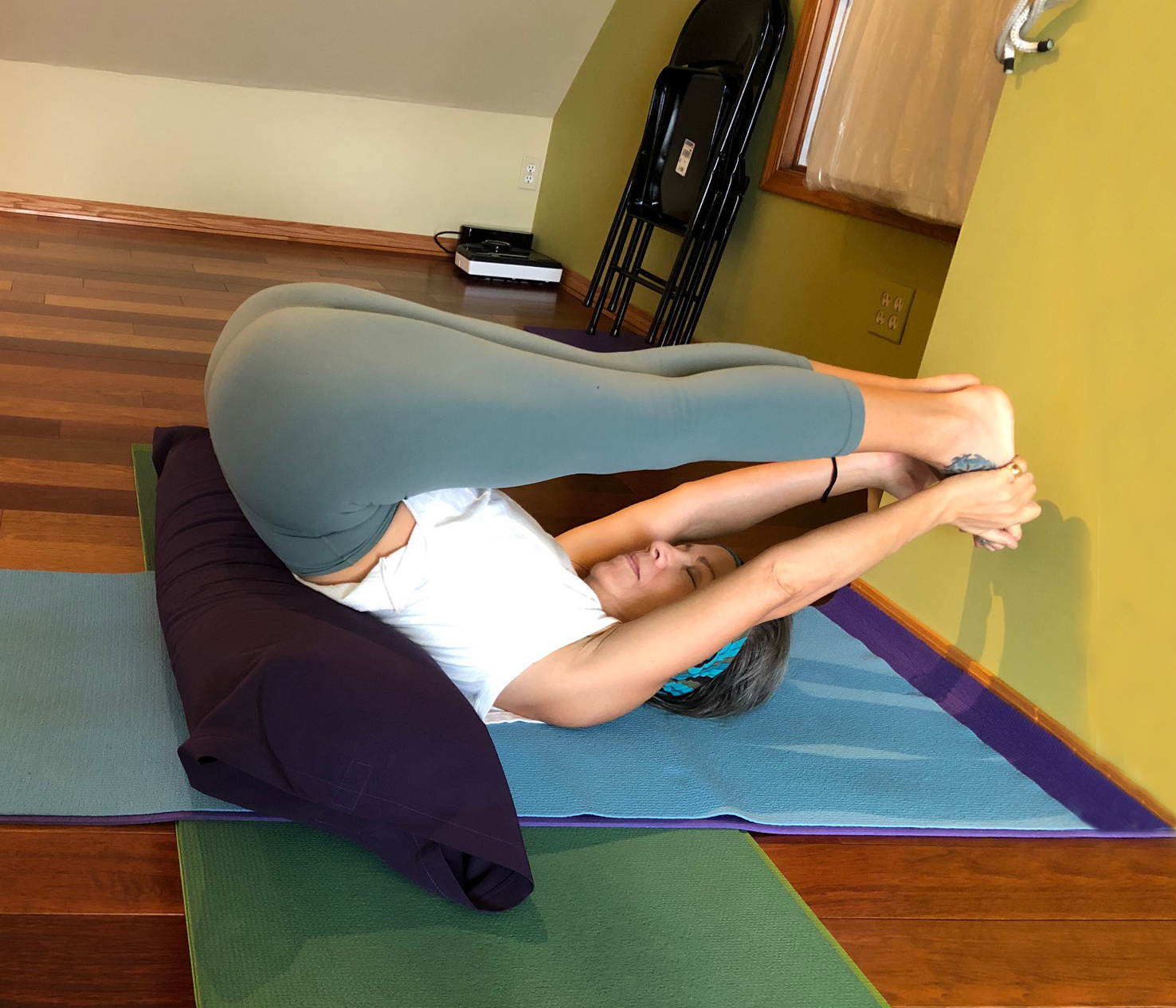
URDHVA MUKHA PASCHIMOTTANASANA (Upward-facing Fold) 3 m
-bolster supporting back hips
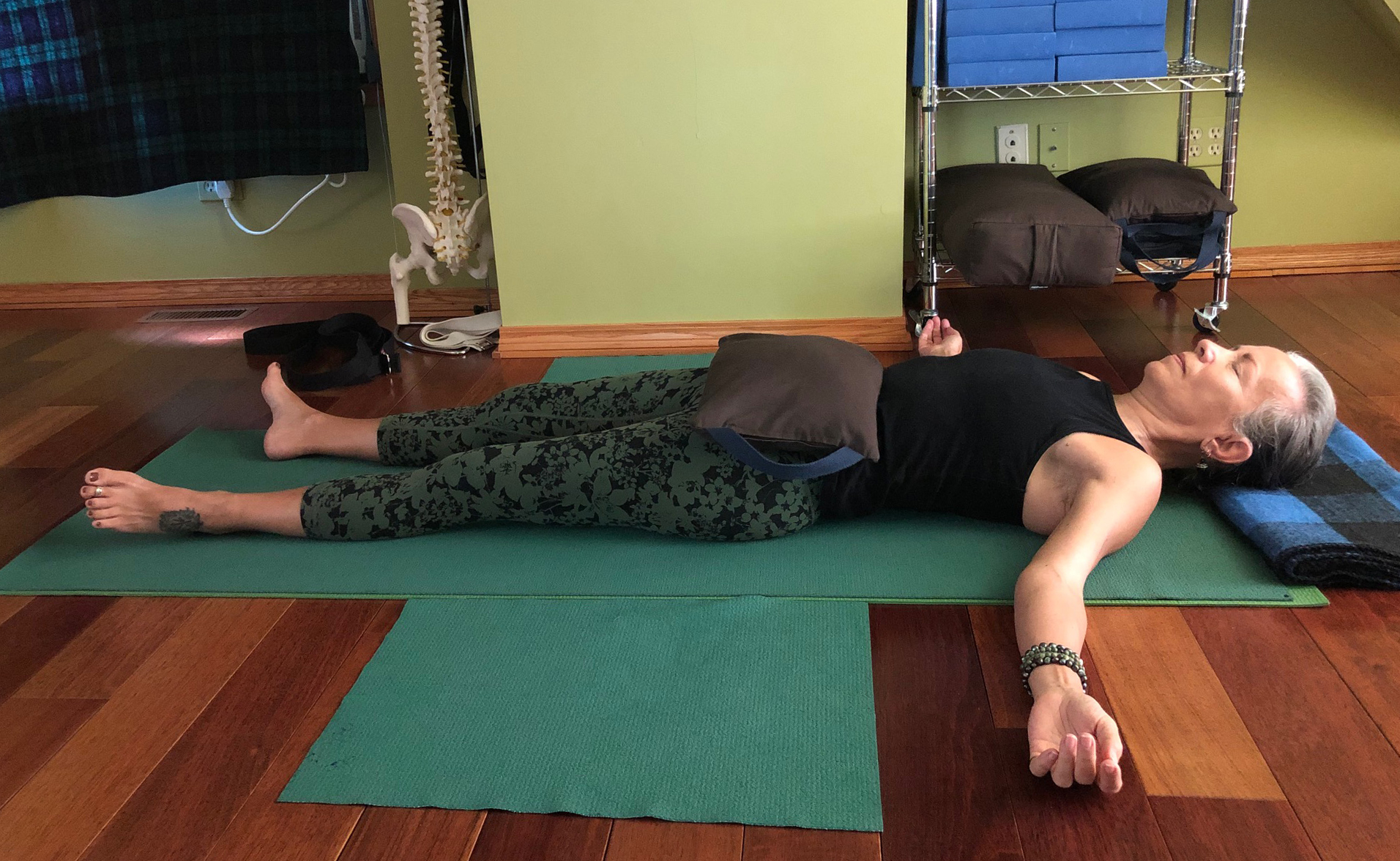
SAVASANA (Corpse Pose) 5 – 10 m
-sandbag or weight on lower abdominals
May enlightenment free you from any attachments and avoidance. Namaste.


